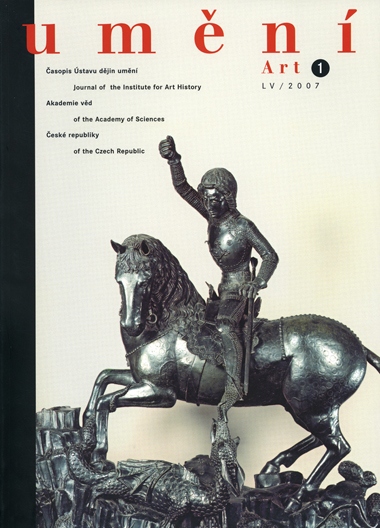Lubomír Konečný - Roman Prahl
Pomník maršála Radeckého a ikonografie hrdiny na štítě
The first part of the study treats the genesis of the Prague monument and its political, local and artistic context. Marshal Radetzky (Radecký) was a native of Bohemia and victor in battles in Italy in 1848-1849. The monument links the ambitions of the Prague Kunstverein, which commissioned it, with the broader Austrian programme. By contrast, the interests of the designer of the monument, the Director of the Academy of Arts Christian Ruben, clashed in the work with the local artistic milieu.
The second part of the study provides an overview of the iconography of the central motif of the monument: the elevation of the main figure on a shield. This ceremony was in use in late antiquity and the early Middle Ages in various contexts. The most important account was provided by Tacitus (Hist. 4, 15), according to whom the Germanic tribe of Batavians, before going into battle with the Romans, chose their leader Brino by setting him on a shield and lifting him above the heads of the warriors. The publication of Tacitus' complete works (1515) contributed to a revival of this formula; the 'Tacitus renaissance' had a fundamental influence on political ideas, particularly in Germany and Holland. Illuminations of Byzantine manuscripts included the motif of elevation on a shield; it appeared in the West after the middle of the 15th century. The study reconstructs the tradition of this motif in art from the 16th to the 19th century.
The third part is concerned with the semantics of the Prague monument and how it was received at the time in the context of politics and sculptural conventions. The monument was a happy compromise between diverse requirements, but it was also an object of criticism based, among other things, on the ambivalence of the main motif in the work. The celebration of military victory was discredited when the status that Austria had hitherto enjoyed was undermined. The ambivalence of the commander/ruler and the possibility of treating the motif in sculpture gave rise to doubts. From this last perspective, however, the originality of the Radetzky monument, which Ruben's opponents questioned, corresponded to the historicism and eclecticism of the period and is remarkable from today's point of view, too.
Full-text in the Digital Library of the Czech Academy of Sciences:
https://kramerius.lib.cas.cz/uuid/uuid:920726a4-f2bb-41d4-b19a-7d93a3965d31
< back

